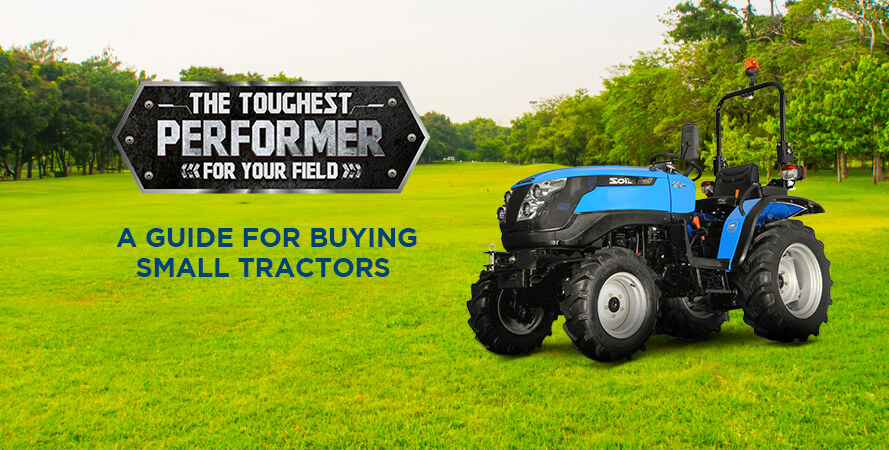Agriculture has become a lot easier with all the technological advancements in place. With the growing population, agriculture has now been mechanized to suit their growing needs. Be it tilling, mowing, sowing or any other task, what took weeks to be done earlier can now be wrapped up in a day or two. With the inception of tractors a few decades ago, farm mechanization is now in its all-time high. Besides
this speeding up of agricultural tasks and the high productivity, the technology used in tractors at current times can do much more.
In recent times, technologies such as GPS, weather tracking, satellite imaging and so on, have brought about automation in farming. There are now driverless tractors that can be operated using mobile apps on a smartphone or other smart devices. The computerized weather modelling, which provides online weather services exclusively for agriculture, has become increasingly sophisticated over time. They provide advanced notice of weather conditions such as hail, frost and the kind, which further enables the farmers to take precautions and mitigate losses.
Satellite imaging allows real-time crop imagery in high resolutions. This enables a farmer to examine crops frequently without even being physically present, which saves a considerable amount of time and money. They are notified about danger thresholds along with appropriate satellite images and can be integrated into crops, soil or water sensors.
Agricultural drones let farmers see their fields from the sky. This bird’s-eye view can reveal many issues such as irrigation problems, soil variation, and pest and fungal infestations. Multispectral images show a near-infrared view as well as a visual spectrum view. The combination shows the farmer the differences between healthy and unhealthy plants, a difference not always clearly visible to the naked eye. Thus, these views can assist in assessing crop growth and production.
Tractors have a come a long way since their innovation, so much so that a variety of tractor sub-categories have come into being over years. This sub categorization into Compact, Sub-Compact, Narrow Farm and many other categories have led to a greater utility of the machine. But these categories also create confusion lead to a bad investment for those not familiar with these varieties of the machine. This leads to many buyers buying an expensive tractor with much higher utility power than the buyer requires. So, in order to avert such a buy, here is our take on these sub-categories their utilities to help you make a better choice.
Know Your Hitches
A hitch or, a three-point hitch is a mechanism via which implements such as ploughs, cultivators are attached to a tractor. The utility of each tractor is limited to the type of hitch it features. There are three types hitches used in tractors as per their category: CAT-0, CAT-1, and CAT-2. All three of these hitches vary in the dimensions of their pin, hitch arm top link.
CAT-0 type hitch are used are used in small tractors used for the lawn maintenance garden work etc.
CAT-1 type hitch has been the industry standard for many small farm tractors. It comes in different widths depending upon the utility of the tractor.
CAT-2 is the largest of the three, and used on tractors with high horsepower. It is more robust in construction and easily handles heavy-duty loads.

Check the Transmissions
Years of innovation have brought many mechanical changes in tractors for good, transmissions are one of them. Be sure to check whether the tractor you are buying a tractor whether it uses the old and inconvenient clutch-style transmission, or, the latest standard: hydrostatic transmission. Tractors with hydrostatic transmission offer much better power supply, maneuverability and comfort in drive. The Hydrostatic Transmission has been the company standard for Solis tractor.
Which is the difference between Compact and Sub-compact tractors?
Most agricultural tractors generally fit into one of several categories such as Utility, Row Crop, and Compact. Depending on the uses and functionality of tractors, most manufacturers place their tractors into the utility category. They can easily be set up with a variety of implements like front end loader, cultivators, trolley, or a mower; this category of tractor dealers has the flexibility across several tasks on the farm.
The category of Utility Tractors is further segregated into two sub-categories – the Compact Tractor and the Sub-Compact Tractor. Some key differences between these categories, we are mentioning below, might help you on deciding the tractor you might be looking to purchase.
Compact Utility Tractors
Compact tractor range is built for delivering exceptional performance as well as convenience in any task. Typically, they are larger than the sub-compact range. They also differ in horsepower ranges and the intended use.
The Compact tractors have a broad frame structure, more weight, and as a result, are able to handle more work as compared to the sub-compact tractors. They are usually designed with higher ground clearance and more wheelbase than the sub-compact tractor to provide more capacity and better efficiency for various operations. Compact Tractors are built for extra expectation for capacity. When attached to implements, they show better pulling power.
Sub-Compact Tractors
They are built for convenience and easy manoeuvrability. Engineered with more electronic and advanced devices on one hand, these add-ons are beneficial for the user, while they demand less maintenance on the other.
The multiple PTO drive shafts provide the convenience with attachments – some of the more popular options that come standard include multiple – one in the front and one in the back. This allows doing multiple jobs at a single point of time with the sub-compact machine.
The light-duty and low-profile frames and sub-compact size of this category enable easier operations in narrow fields or gardens, easy accessibility, comfortable seating steering, and low maintenance, all driven to make the sub-compact a preferred choice for someone maintaining relatively light-duty landscapes. The category is aligned to its market and doesn’t burn a hole in your pockets.



